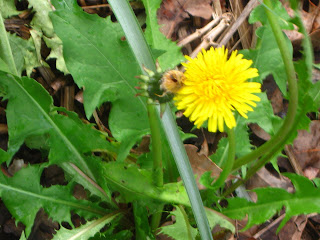 English dandelion (Taraxacum officinale) has been encouraged to grow where ever it likes in my garden as a salad green and chicken feed. It is a valuable addition to any diet, containing more nutrients than any other herb, including more Vitamin A than carrots. It is a tonic useful for the liver and gall bladder. Its sappy white juice can be used to remove warts. I had dug a large patch out to make room for more vegetable beds and was busy chucking it to the chickens when I realised it had roots on that the chickens wouldn’t eat.
English dandelion (Taraxacum officinale) has been encouraged to grow where ever it likes in my garden as a salad green and chicken feed. It is a valuable addition to any diet, containing more nutrients than any other herb, including more Vitamin A than carrots. It is a tonic useful for the liver and gall bladder. Its sappy white juice can be used to remove warts. I had dug a large patch out to make room for more vegetable beds and was busy chucking it to the chickens when I realised it had roots on that the chickens wouldn’t eat.
Trimming and washing the roots, I chopped them into even sized slices and laid them on the racks in my electric food dryer. When dry, they went onto a baking tray which I placed in the oven of my cooling slow combustion stove as I shut it down for the night. By morning the pieces were uniformly dark brown in colour and looked like the stuff in the jar.
The taste test was next. You need to simmer the root for 5 minutes before straining. It can be used a couple of times before loosing its flavour. While similar to the commercial product, mine was a little earthier and lacked the ‘roundness’ of flavour that the chicory root provides. Mixed half/half it was good. If I can beg some chicory root, I will try that next time.

If I chose to, I could drink lemongrass or mint tea all year round as they both grow well. Instead, I chose an interesting experiment to provide one jar of produce, with very little cost to the environment or myself. I will never be able to grow coffee, tea or enough dandelion root to supply my own needs but I feel I am a little more informed about the effect of my shopping choices in terms of the environment.
For more information on eating dandelion, see Cooking with Herbs e book by Nerys Purchon.